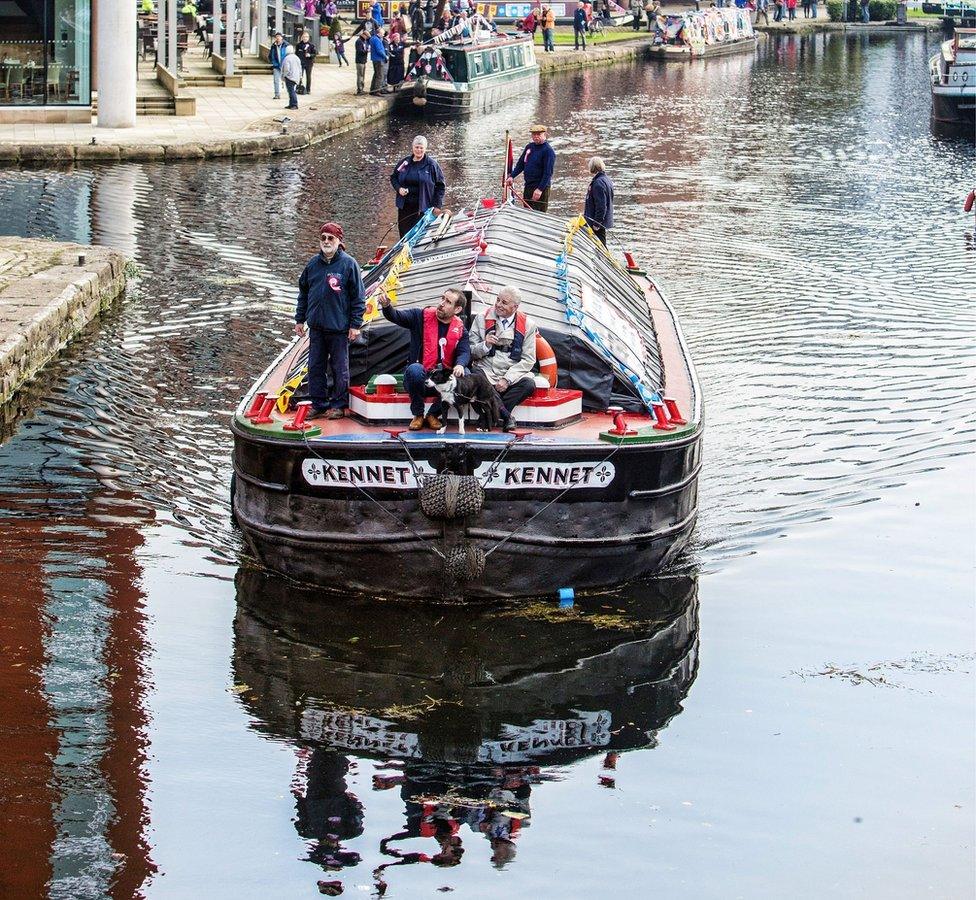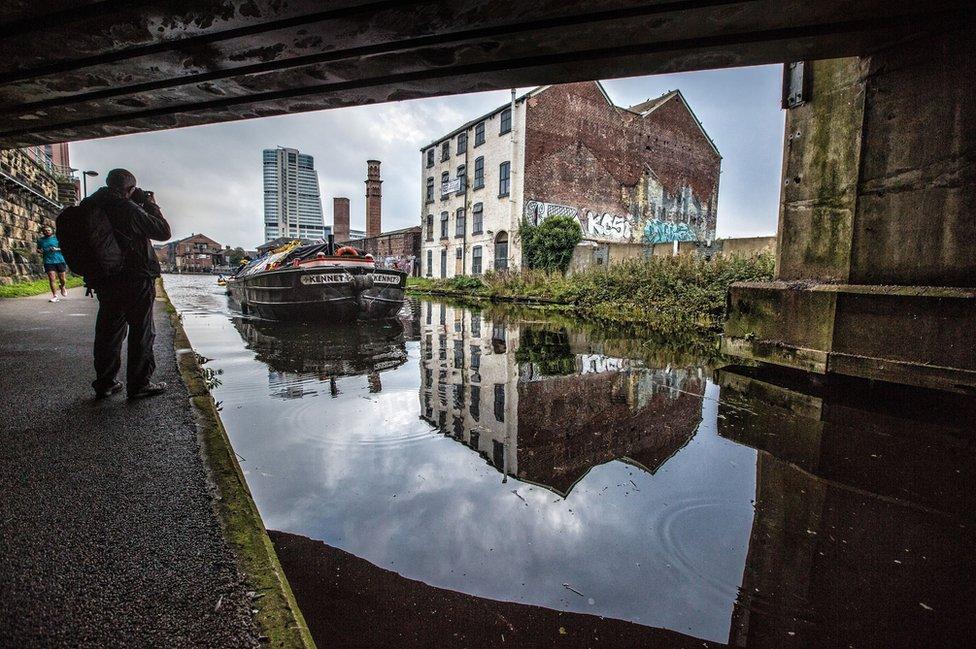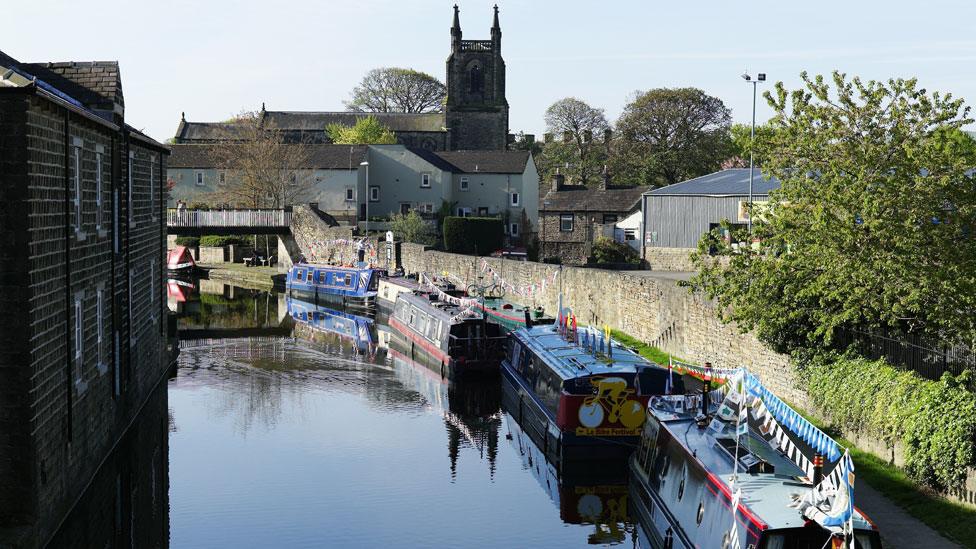Leeds and Liverpool Canal: Bicentenary of canal marked with voyage
- Published

Kennet set off on the nine-day voyage from Leeds city centre on Saturday
The 200th anniversary of England's longest man-made waterway is being marked with a nine-day voyage.
The inaugural 1816 boat passage by Yorkshire and Lancashire merchants on the 127-mile Leeds and Liverpool Canal is being recreated on a former working boat called Kennet.
Members of the Canal and River Trust and the Leeds and Liverpool Canal Society set off from Leeds on Saturday.
Brass bands and crowds have greeted the boat along the way on its journey.
They plan to arrive in Liverpool on 23 October.

The 127-mile waterway opened in 1816
The boat will have to negotiate 91 locks, climb nearly 152m (500ft) over the Pennine hills and cruise through the one-mile Foulridge Tunnel.
Trip organiser Harold Bond said: "Back in 1816, press reports state that the ceremonial first boat was greeted by pealing church bells, brass bands and cheering crowds, and canal barges were bedecked in flags and streamers.
"We are hoping to recreate that amazing atmosphere of celebration again."
A new musical commission celebrates the bicentenary of the Leeds and Liverpool Canal
Chantelle Seaborn, local waterway manager with the Canal and River Trust, said: "The opening of the Leeds and Liverpool Canal played a key role in Britain's Industrial Revolution and encouraged the development of the textile industries in Lancashire and West Yorkshire."


It aims to reach Liverpool by 23 October
Leeds & Liverpool Canal
The longest canal in Britain built as a single waterway at 127 miles (204 km)
From Liverpool, it passes through East Lancashire and crosses Pennine countryside, takes in villages on the edge of the Yorkshire Dales before reaching Leeds
The canal's most important cargo was coal, with the last cargo of coal carried along the Leigh Branch to Wigan Power Station in 1972
The Ribble Link, which opened in 2002, allows the canal to connect with the Lancaster Canal
Following the £22m creation of the Liverpool Canal Link, the waterway now extends into Liverpool's Albert Dock
Source: Canal & River Trust

- Published27 February 2016
